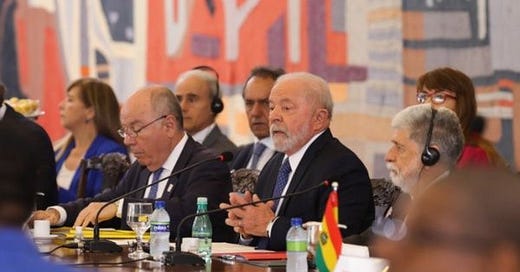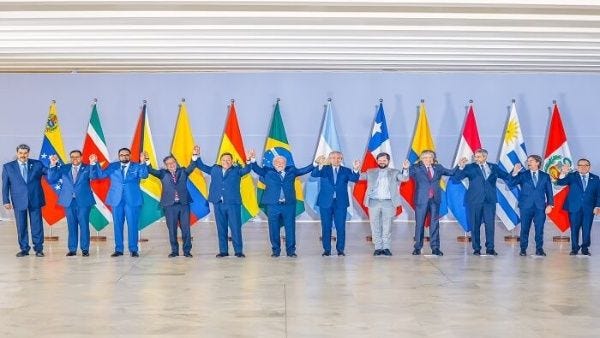Brazilian President Lula Luiz Inácio Lula da Silva, known as Lula, recently convoked a meeting of South American presidents. In response, ten South American presidents arrived on May 30 to the Palace of Itanaraty, headquarters of the foreign affairs office of Brazil. They included the presidents of Argentina, Alberto Fernández; Bolivia, Luis Arce; Chile, Gabriel Boric; Colombia, Gustavo Petro; Ecuador, Guillermo Lasso; Guyana, Irfaan Ali; Paraguay, Mario Abdo Benítez; Surinam, Chan Santokhi; Uruguay, Luis Lacalle Pou; and Venezuela, Nicolás Maduro. The President of Peru, Dina Boluarte, sent the president of the Council of Ministers, Alberto Otárola.
© 2025 Charles McKelvey
Substack is the home for great culture



